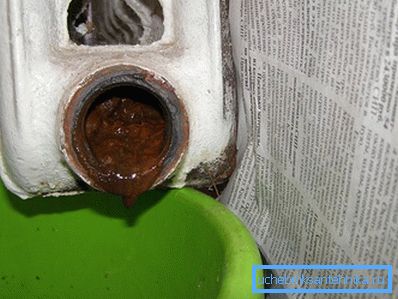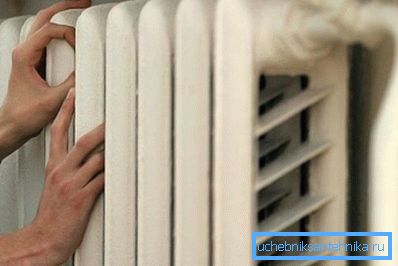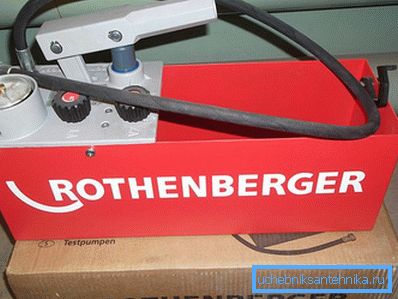Flushing and pressure testing of the heating system
For normal functioning of the heating system, it must be periodically cleaned. It is possible to use several methods of such purification, but the hydropneumatic method is considered the most popular. And how flushing and pressure testing of the heating system is carried out will be discussed in this article.
What ways are there

When operating inside the heating pipes accumulates scale. This sediment significantly affects both the state of the pipes themselves and the efficiency of the system. A layer of scale just 1 mm reduces heat transfer by 15%. This negative effect significantly increases the cost of fuel while reducing the efficiency of the system.
Tip! In order not to incur additional costs, it is necessary to periodically flush the heating system.
How can I find out about the need to flush the system? The following signs will tell you about the accumulated scale:
- the entire heating system is heated for a long time;
- cold radiators with hot pipes;
- extraneous sounds are heard from the heating boiler;
- increased fuel costs.

If you notice these signs, it is necessary to clean the pipes with their subsequent pressure testing. To do this, you can use two methods:
- hydropneumatic;
- chemical.
The first method is most common. That it is widely used service utilities. We will talk about the hydropneumatic washing method a little later. The chemical method is used less frequently. In this method, a special solution is poured into the system instead of the coolant. As a result of the chemical reaction, all deposits present in the pipes are eroded and removed.
The chemical method has many drawbacks:
- first, such an operation can be performed only on steel pipes;
- secondly, according to current regulations, it is impossible to drain the chemical flushing liquid down the drain;
- thirdly, the cost of the drugs used is very high.
Tip! If the heating system is old, steel pipes can be highly susceptible to corrosion. Chemical elements during washing dissolve rust, therefore, worn-out products may lose their tightness.
Hydropneumatic flushing

The use of a hydropneumatic method for flushing the heating system is considered the most effective. The principle of its operation is quite simple. Air filled with high pressure is supplied to the system filled with water. As a result, the air-water stream loosens and washes away the formed scale inside the pipes. Then the water along with sediment particles is removed from the system.
If you decide to flush yourself, you need to stock up on a compressor. When buying (or renting) it is necessary to focus on the technical characteristics. First, the equipment must be able to inject pressure of at least 6 atmospheres. Secondly, it is desirable that the compressor has the function of automatic control of the frequency of the formation of pulses for the mixture.
In addition, it is desirable that the device had other additional functions. Namely:
- it was possible to add disinfectants;
- there was a function of protection against spontaneous inclusion;
- flush water flow and pressure levels were set.
Tip! Since you will use the compressor inside your house or apartment, the device should be quite compact and mobile.

The washing process itself using the hydropneumatic method can be performed in two ways. In the first case or using the flow method, the work will be as follows:
- the drain nipple closes and the system is filled with water, while the air collector valve remains open;
- after filling the entire system with water, the valve closes and the compressor begins to supply air;
- a vent opens;
- water along with the air passes through all systems and goes into the return pipe.
Rinsing continues until clear water comes out of the vent.
When using the second method, the system, as in the first case, is filled with water and pressurized air is supplied to it for 5–15 minutes. Then the compressor is turned off and the vent is opened. Water along with scale and other contaminants is removed from the system. This procedure is repeated several times, until a clear liquid is obtained at the exit of the discharge pipe.
We carry out pressure testing

When installing a new heating system or preparing an old one for the heating season, it is necessary to carry out a pressure test. This procedure allows you to check all connections and the devices themselves and pipes for tightness. Also, pressure testing is carried out in the heating season, if at that time the system was repaired.
The test procedure itself can be carried out using water or air. In the cold period of the year, the second method, which eliminates the freezing of fluid in the system or when it leaks, is more preferable.
The process itself works with the use of air will look as follows:
- The entire heat transfer medium is drained from the heating system.
- Next, overlap the valves connecting the selected area with the central system. If the tests will be conducted in a private house, then there is no need to isolate the site, because your system is autonomous.
- After that, the compressor is connected and air pumping to the desired pressure begins. This indicator depends on the working pressure and should exceed it at least twice. For example, if in a private house in a working heating system there are 2 atmospheres, then during testing it is necessary to reach 4–5 atm.
- Observe pressure for at least 8 hours. If all connections are made qualitatively, then it will not change (or it will change very little). In addition, it is desirable to visually inspect all devices and joints (both collapsible and soldered). In this case, the compounds are coated with a soap solution (if the pressure test is carried out using air).
When using the water method, you need to purchase (or rent) special pressure pumps. They can be either manual or electric. The principle of operation is similar to the previous one. Using the pump, the system creates the necessary pressure and checks the tightness of all devices and connections.
Video
This video shows the hydropneumatic flushing of heating systems in action:
The work of the opressovschika can be seen in this video: